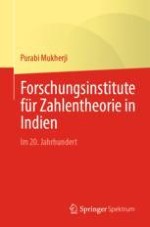2024 | OriginalPaper | Buchkapitel
2. Indische Forschungsschulen zur Zahlentheorie
verfasst von : Purabi Mukherji
Erschienen in: Forschungsinstitute für Zahlentheorie in Indien
Verlag: Springer Nature Singapore
Aktivieren Sie unsere intelligente Suche, um passende Fachinhalte oder Patente zu finden.
Wählen Sie Textabschnitte aus um mit Künstlicher Intelligenz passenden Patente zu finden. powered by
Markieren Sie Textabschnitte, um KI-gestützt weitere passende Inhalte zu finden. powered by
